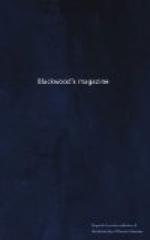“Salmon,” says Mr Scrope, “are led by instinct to select such places for depositing their spawn as are the least likely to be affected by the floods. These are the broad parts of the river, where the water runs swift and shallow, and has a free passage over an even bed. There they either select an old spawning place, a sort of trough left in the channel, or form a fresh one. They are not fond of working in new loose channels, which would be liable to be removed by a slight flood, to the destruction of their spawn. The spawning bed is made by the female. Some have fancied that the elongation of the lower jaw in the male, which is somewhat in the form of a crook, is designed by nature to enable him to excavate the spawning trough. Certainly it is difficult to divine what may be the use of this very ugly excrescence; but observation has proved that this idea is a fallacy, and that the male never assists in making the spawning place: and, indeed, if he did so he could not possibly make use of the elongation in question for that purpose, which springs from the lower jaw, and bends inwards towards the throat. When the female commences making her spawning bed, she generally comes after sunset, and goes off in the morning; she works up the gravel with her snout, her head pointing against the stream, as my fisherman has clearly and unequivocally witnessed, and she arranges the position of the loose gravel with her tail. When this is done, the male makes his appearance in the evenings, according to the usage of the female. He then remains close by her, on the side on which the water is deepest.”—P. 15.
During this crisis trout collect below to devour such portions of the spawn as float down the river, and parr are frequently seen hovering in and around the trough. All these parr are salmon fry of the male sex, in a state of maturity; and if the old gentleman chances to be killed, or driven away, without having provided an assistant or successor, the “two-year-olds” perform the functions of paternity. This circumstance, though overlooked by modern naturalists till the days of Shaw, (not the old compiling doctor of the British Museum, but the more practical “keeper” of Drumlanrig,) was known and described by Willoughby in the seventeenth century. “To demonstrate the fact,” says the more recent observer, “in January 1837, I took a female salmon, weighing fourteen pounds, from the spawning bed, from whence I also took a male parr, weighing one ounce and a half, with the milt of which I impregnated a quantity of her ova, and placed the whole in a private pond, where, to my great astonishment, the process succeeded in every respect as it had done with the ova which had been impregnated by the adult male salmon, and exhibited, from the first visible appearance of the embryo fish, up to their assuming their migratory dress, the utmost health and vigour.”




